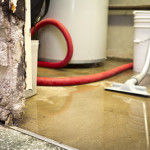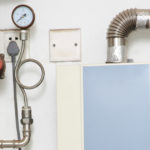 Water heaters are one of those household items that are quite often out of sight, out of mind. If neglected, they can be a real problem when they fail. At best the result can be no hot water at all, or for a short while, at worst, a flooded basement!
Water heaters are one of those household items that are quite often out of sight, out of mind. If neglected, they can be a real problem when they fail. At best the result can be no hot water at all, or for a short while, at worst, a flooded basement!
There are two main types of water heaters, gas or electric. Gas ones can run on natural gas or propane, while electric ones can run on 110V or 220V. When choosing one the capacity of the tank should be based on the number of people in the household and whether there are whirlpool tubs. A typical four-person family should be fine with a 40 U.S. gallon tank although teenagers may require more. More than 50 U.S. gallons is recommended for five or more people.
It makes sense to install the tank in a central area that has easy access to the home’s water pipes. Also, in the case of a gas water heater, access to venting to the outside is required. Check the equipment manufacturer’s installation instructions for further tips on how to install it.
There are three main venting types to consider: atmospheric, direct or power venting.
Atmospheric venting is the most common type and uses a vertical metal pipe that can either connect to a chimney or run directly up through the attic to a point above the rooftop. The hot exhaust rises naturally up the flue, making this a low cost option.
Direct venting uses a horizontal flue pipe to vent directly through an exterior wall to the outside. This method needs to be airtight and can use a separate pipe to bring in fresh air. The advantage is the flexibility of installation.
Finally, mechanical venting or power-vent water heaters have an electric fan that blows the exhaust through the vent to the outside. This type is more expensive but allows the unit to use horizontal or vertical piping and be remote from the outside of the house.
Wherever the venting runs it’s important to use high quality roof vents or wall caps to prevent leaks or infiltration by pests.
Why do hot water tanks leak?
As the heater ages, calcium dissolved in the water will accumulate along with other sediments on the bottom of the tank making it harder for the tank to heat the water. This encourages rust and the end result is the bottom of the tank will start to leak.
Always look for signs of leaking around the bottom of the tank. Note whether the unit takes longer to get hot. If you suspect the tank is failing don’t hesitate to replace it as a flood could happen if you wait too long.
Although the lifespan of a tank typically runs 8-12 years it can be extended with some simple maintenance. Some manufacturers advertise their tanks as being self-cleaning but it’s still worth draining the tank on a regular basis to clear sediment from the bottom.
Depending on how much sediment is expected, the entire tank can be flushed using a pump Or, five gallons or so can be drawn out of the drain valve at the bottom of the tank. Also make sure the T&P valve (temperature and pressure valve) is working properly as this is an important failsafe in case the tank overheats.


